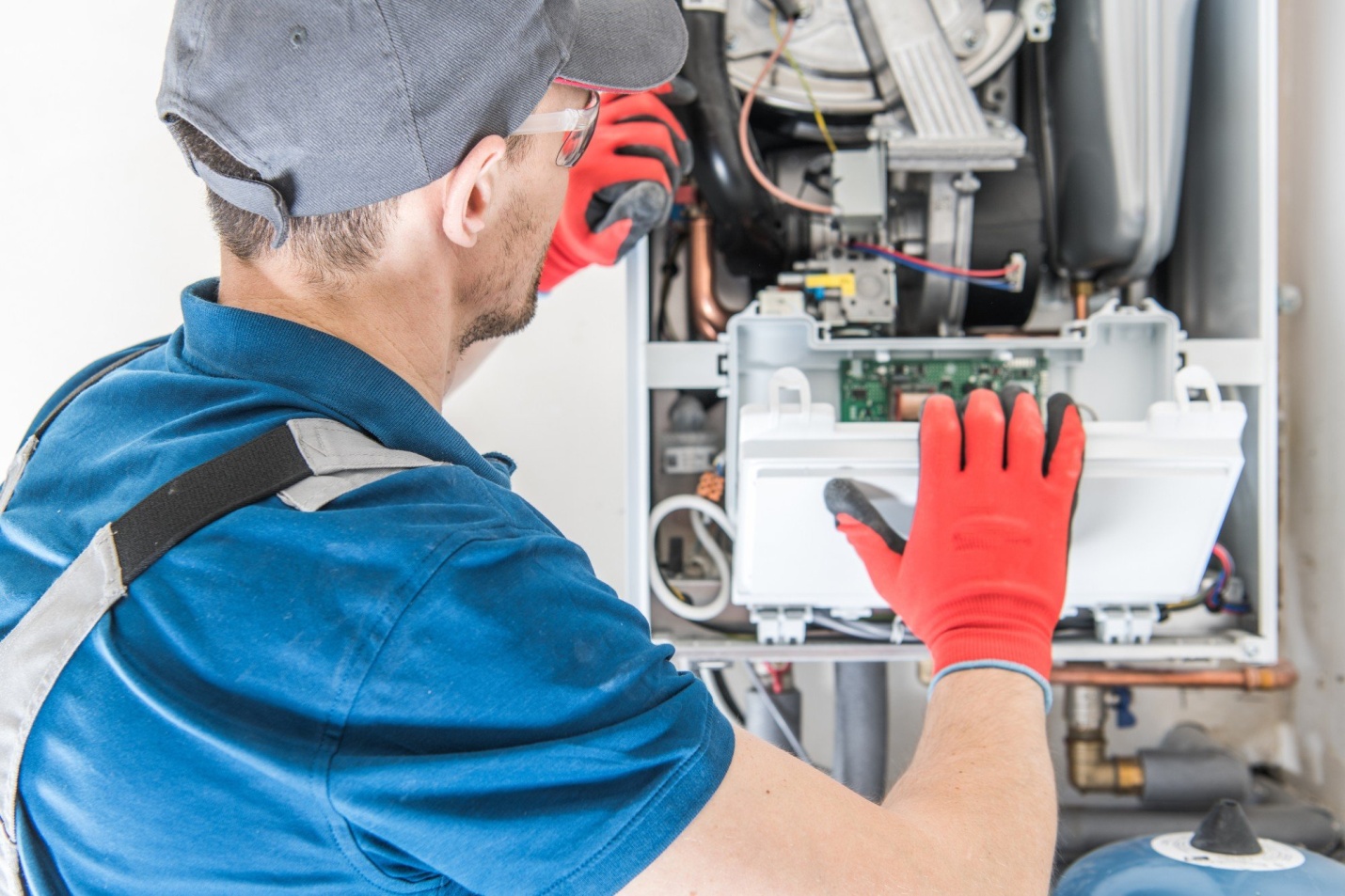
When the chill of winter whispers through the seams of your home, the last thing you want is a furnace that falters. A thorough furnace inspection isn’t just a line item on your to-do list; it’s your frontline defense against the cold’s uninvited embrace. But let’s shift from merely reacting to problems to preventing them.
Why wait for the furnace to fail when you can master the signs of trouble and ensure warmth all season long? Your comfort, your safety, your peace of mind; it all starts with understanding what makes your furnace tick.
So, roll up your sleeves, and let’s peel back the layers of your home’s unsung hero. Read on and transform your routine furnace inspection into a savvy safeguard for your cozy winter sanctuary.
1. Check the Thermostat
When the chill sets in, the thermostat is your first stop. Think of it as the commander of your heating system. It tells the furnace when to kick on and when to rest.
If your home feels colder than what the numbers on the thermostat indicate, it’s time to do a little detective work. Start by making sure the device is on the correct setting.
For those in Sacramento, where temperatures can swing from one extreme to another, this is especially crucial. A properly functioning thermostat keeps your home at a steady, comfortable temperature, no matter what the weather outside is doing.
Now, give it a test. Turn up the heat a few degrees and listen. Do you hear the furnace respond?
If there’s silence, it may be time to replace the batteries or check the circuit breaker. Sometimes, it’s a simple fix. Other times, especially if the thermostat is older, you might need to consider a replacement.
2. Inspect the Air Filters
Moving on, let’s talk about breathing easy. Your furnace’s air filter is its first line of defense against dust and debris. A clogged filter makes your furnace work overtime, and that’s not good for anyone.
A quick check can save you a lot of trouble. Slide out the filter and hold it up to the light. Can you see through it?
If not, it’s time for a fresh one. Residents dealing with the varied air quality of Sacramento know this all too well. A clean filter is essential.
Changing your furnace air filter is straightforward. Make sure you’ve got the right size and slide the new one into place. This simple act can have a big impact.
Not only does it help your furnace run more efficiently, which is good for your wallet, but it also keeps the air in your home cleaner, which is good for your lungs.
3. Examine the Furnace Flame
The heart of your furnace is its flame, and with a gas furnace, this is where the heat comes alive. Peek through the furnace’s inspection window and take a look at the flame.
What you want to see is a steady blue flame. If it’s yellow or flickering, it’s not just an aesthetic issue. It could be a sign that something’s wrong.
A yellow flame might mean your furnace is producing carbon monoxide, which is dangerous. It’s not a time to guess. If the flame isn’t blue, it’s time to call in a professional.
They can assess whether it’s a simple issue like a dirty burner or something more serious. Your safety is paramount, so don’t take chances here. Keeping that flame burning blue is key to a safe and warm home.
4. Listen for Unusual Noises
A well-maintained furnace runs smoothly and quietly. So when you hear clangs, bangs, or whistles, it’s a signal to pay attention. These sounds are like a language your furnace uses to tell you something isn’t quite right.
A rattle might point to a loose panel that needs tightening, while a whining sound could signal a belt problem. If you’re familiar with the sounds of your furnace and something new pops up, don’t ignore it. Keeping up with furnace maintenance means catching these noises early and addressing them before they turn into bigger, costlier problems.
5. Assess the Blower Belt
Deep inside your furnace, the blower belt is hard at work, helping circulate warm air throughout your home. You’ll want to check this belt annually to make sure it hasn’t loosened or worn down. A good rule of thumb for an annual furnace inspection is to give this belt a once-over.
Look for any signs of fraying or cracking. If the belt seems loose, it might need adjusting to keep your furnace’s airflow steady and strong.
6. Inspect the Ventilation System
Your home’s ventilation system is like a set of lungs; it needs to be clear to work well. Checking the vents and the flue for blockages is a key part of any safety inspection. Over time, debris or even bird nests can block these pathways, which can lead to dangerous gases like carbon monoxide building up in your home.
Take a look at where your furnace vents to the outside. Make sure nothing’s blocking the flow of air. This isn’t just about efficiency; it’s about keeping the air in your home safe to breathe.
7. Look for Physical Damage
Last but not least, take a step back and look at the furnace itself. What you’re looking for here is any sign of physical damage. Rust, corrosion, or watermarks could mean there’s a leak somewhere, and that’s something you’ll want to catch early.
Any damage to the furnace’s exterior could also hint at problems on the inside. If you spot something worrying, calling in a professional from the HVAC Sacramento community might be your next best step. It’s all part of keeping your furnace not just running, but running safely.
From Furnace Inspection to Protection
Wrapping up your furnace inspection can be as satisfying as feeling the steady flow of warm air on a brisk day. Today, you’ve equipped yourself with the essential know-how to keep the lifeblood of your home heating system in prime condition. Remember, each step you take fortifies your sanctuary against the unpredictability of the elements.
For more insights that bring quality and warmth to your daily living, don’t hesitate to explore our Lifestyle section.

